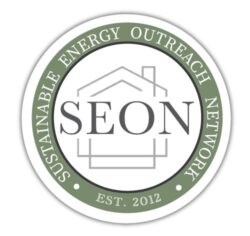A study in the Case Studies in Construction Materials titled “Enhancing Ultra-High-Performance Concrete with Oyster Ash and Electric Arc Furnace Dust” introduces a groundbreaking development in the field of construction materials. The research explores the incorporation of Oyster Ash (OA) and Electric Arc Furnace Dust (EAFD) into Ultra-High-Performance Concrete (UHPC), leading to remarkable improvements in both mechanical properties and durability. This article aims to provide key takeaways for high-performance builders and architects.
Key Takeaways:
- Superior Strength and Elasticity:
- The UHPC achieved an impressive compressive strength of over 150 MPa after just 28 days of water curing.
- Steel fibers added to the UHPC contributed to its exceptional fracture properties, preventing fracture due to their ductile characteristics.
- Ductility and Energy Absorption:
- The UHPC exhibited a prolonged softening mode of collapse, demonstrating enhanced ductility and energy absorption capabilities.
- The addition of EAFD significantly improved the energy absorption, making the UHPC suitable for applications requiring impact resistance.
- Enhanced Durability:
- UHPC with OA and EAFD displayed a dense microstructural matrix, resulting in low water absorption, zero water permeability, and negligible chloride permeability.
- The electrical resistivity of the UHPC surpassed 100 k-Ω-cm, indicating excellent resistance to corrosion and durability in corrosive environments.
- Sulfate attack tests demonstrated the UHPC’s resistance to deterioration, highlighting its potential for long-term durability.
- Drying Shrinkage and Water Absorption:
- UHPC specimens with EAFD and OA showed significant impacts on drying shrinkage. Drying shrinkage increased by approximately 33% and 95% when replacing MS with 5% EAFD and 20% OA, respectively.
- The water absorption capacity of UHPC with EAFD and OA was notably reduced, thanks to the improved microstructure and interconnectivity of steel fibers.
- Retrofitting and Construction Applications:
- UHPC with OA and EAFD offers an innovative solution for retrofitting existing reinforced concrete structures, enhancing their strength, durability, and resilience.
- The developed UHPC shows great potential for various high-performance construction applications, contributing to more durable and resilient infrastructures.
Conclusion
The integration of Oyster Ash and Electric Arc Furnace Dust into Ultra-High-Performance Concrete presents a significant breakthrough in construction materials. The resulting UHPC exhibits exceptional strength, ductility, enhanced energy absorption, and improved durability. These advancements open up new possibilities for high-performance builders and architects to create resilient structures and retrofit existing ones. By harnessing the potential of UHPC with OA and EAFD, the construction industry can push the boundaries of performance and durability, contributing to a sustainable and resilient built environment.
Innovative Ultra-High Performance Concrete (UHPC) Incorporating oil ash and electric arc furnace dust
Ibrahim Y. Hakeem a, Md. Akter Hosen b, Bassam A. Tayeh c, Ali Alhamami a
Cite: https://doi.org/10.1016/j.cscm.2023.e01843
Abstract
Extensive modern industrialization produces massive amounts of hazardous waste, which becomes an enormous concern due to their harmful impacts on human health and the ecosystem. Tackling hazardous waste with a more secure approach is crucial. The use of hazardous wastes as building materials makes a significant contribution to environmental protection and supports sustainable growth in the construction industry. This study aims to develop eco-friendly innovative ultra-high-performance concrete (UHPC) comprising regionally accessible industrial waste materials such as oil ash (OA) and electric arc furnace dust (EAFD) as a partial replacement of micro silica (MS) and natural fine sand to minimize its environmental impact and reduce the amount of these wastes dumped in lakes and landfills, as well as diminishing the cost of UHPC. A total of 13 various UHPC mixes with varying replacements of MS and fine sand by OA and EAFD, e.g., 0 %, 5 %, 10 % and 20 % of the total mass of MS and fine sand, were made. The UHPC with 0 % replacement was maintained as a reference. The mechanical characteristics were investigated through compressive and flexural strength of the specimens. The ductile performance was examined through load-deflection, energy absorption capabilities, and fracture toughness. Lastly, the durability characteristics such as water absorption, water permeability, drying shrinkage, chloride penetrability, electrical resistivity and sulfate resistance was also examined. The outcomes demonstrated that 20 % OA and 5 % EAFD replacement of MS were the optimum levels of replacement that could produce sustainable UHPC with comparable mechanical and durability performance over the reference UHPC.

